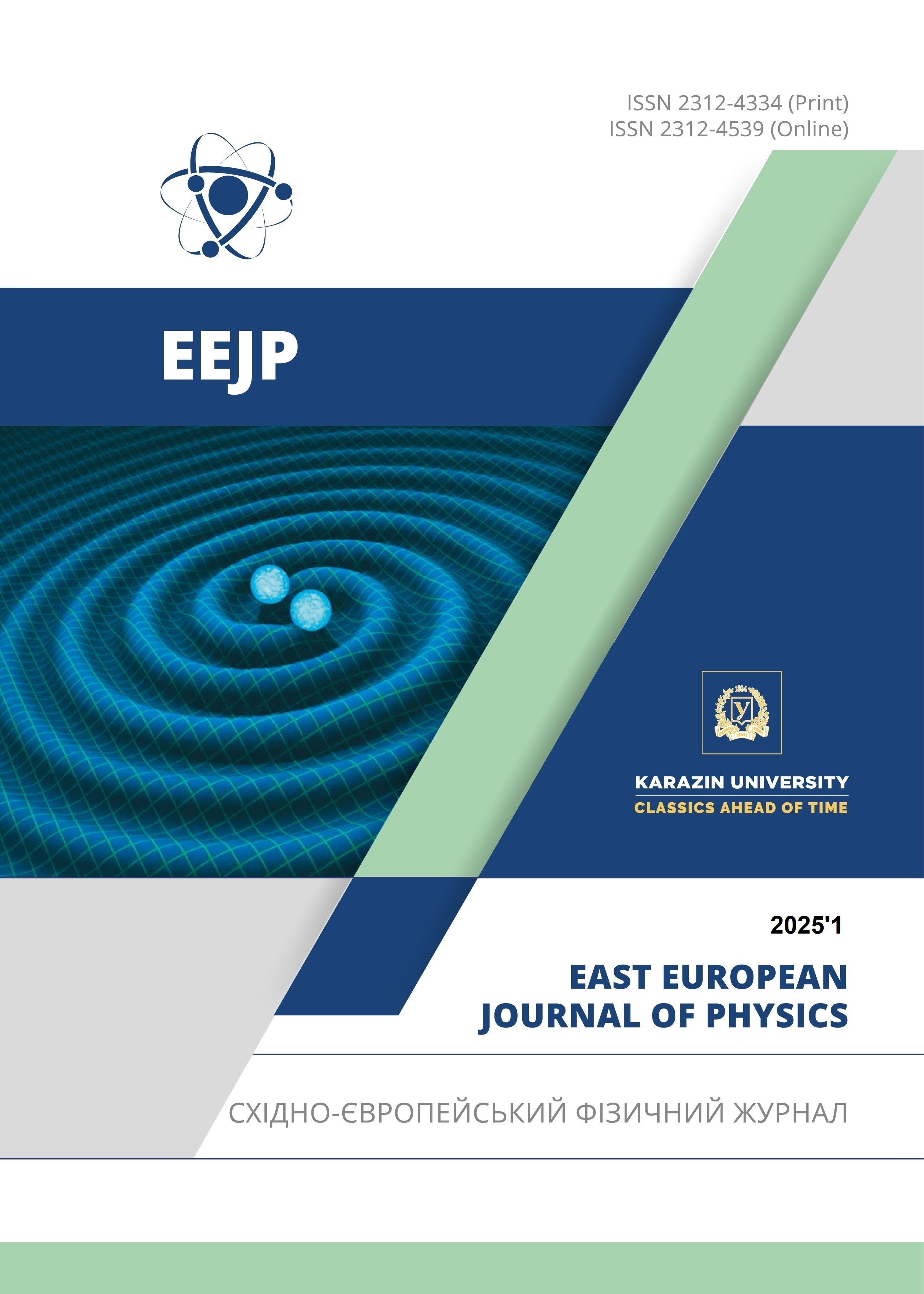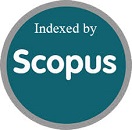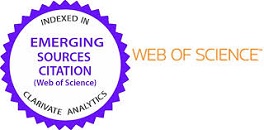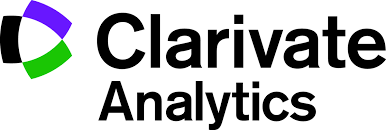Physical and Magnetic Properties of Silicon Doped with Impurity Germanium Atoms
Abstract
This paper presents the results of a study of silicon diffusion-doped with germanium impurity atoms. For the diffusion of germanium impurity atoms, the original single-crystal silicon of the KEF-100 brand was used, in which the phosphorus concentration was equal to Np≈5ꞏ1013cm-3. The selection of such a concentration of phosphorus impurity atoms was justified by the fact that this concentration of phosphorus atoms has practically no effect on the electrophysical properties of the obtained samples of silicon doped with germanium impurity atoms (Si<Ge>) due to the high solubility of germanium impurity atoms in silicon. As shown by the conducted experimental studies in silicon samples doped by the developed new technology, there are a number of important practical features as well as, the time of the diffusion process of impurity atoms of germanium in silicon according to the developed new technology is reduced by 2‑2.5 times, the power consumption during diffusion is reduced by 2 times, the formation of various impurities, silicides, both on the surface and at the surface region of silicon and surface erosion are almost completely eliminated. The study of the electrophysical and magnetic properties of silicon doped with impurity atoms of germanium showed that on the surface and in the near-surface, in addition to the formation of saturated layers of impurity atoms of germanium, binary compounds GexSi1-x are also formed. Based on the X-ray energy dispersive microanalysis, it was determined that the concentration of silicon atoms on the surface is ~44.32%, germanium atoms ~38.11%, oxygen atoms ~15.58% and carbon atoms ~1.98%. These data showed that the number of germanium atoms on the surface is almost half the number of the main silicon atoms. The presence of impurity germanium atoms leads to a strong change in the fundamental parameters of the original silicon. The results of the study showed that in the samples of silicon doped with impurity germanium atoms, ferromagnetic properties are observed at relatively high temperatures (T = 300 K). For the first time in the samples of silicon doped with impurity germanium atoms, galvanomagnetic parameters such as Ms-saturation magnetization, Mr-residual magnetization and Hc-coercive force were determined. It was shown that in samples of silicon doped with impurity atoms of germanium, the fundamental parameters (the value of the width of the forbidden zone, mobility and band structure) of the original silicon change in a wide range, which leads to an expansion of the spectral range of photosensitivity, as well as magnetic properties, i.e. ferromagnetism is observed at relatively high temperatures (T=300 K).
Downloads
References
Z. Fan, J. Lian, J.-L. Chen, Y. Pen, and H. Lai, Journal of Materiomics, 9, 984 (2023). https://doi.org/10.1016/j.jmat.2023.03.004
A.S. Saidov, D.V. Saparov Sh.N. Usmonov, and A. Kutlimratov, J.M. Abdiev, M. Kalanov, A.Sh. Razzakov, et al., Advances in Condensed Matter Physics, 2021, 472487, (2021). https://doi.org/10.1155/2021/3472487
B.A. Akimov, V.A. Bogoyavlenskii, and L.I. Ryabova, Semiconductors. 33(1), 6 (1999). https://doi.org/10.1134/1.1187637
G.P. Shveikin, and A.I. Gusev. Nanomaterials, Nanostructures, and Nanotechnologies, 42(6), 696 (2006). https://doi.org/10.1134/S0020168506060215
M.K. Bakhadyrkhanov, S.B. Isamov, and N.F. Zikrillaev. Microelectron. 41(6), 354 (2012). https://doi.org/10.1134/S1063739712030043
Ch. Etler, P. Senekowitsch, and J. Fabian, Proc. IEEE International Conference on Computational Electronics, 14, 1 (2010).
Sh.B. Utamuratova, Uzbek Journal of Physics, 19(4), 12–13 (2017).
M.P. Teplyakov, O.S. Ken, D.N. Goryachev, and O.M. Sreseli, Semiconductors, 52(9), 1071 (2018).
M.K. Bakhadyrkhanova, Kh.M. Ilieva, G.Kh. Mavlonova, K.S. Ayupova, S.B. Isamova, and S.A. Tachilina, Technical Physics, 64(3), 385 (2019).
N.F. Zikrillaev, G.H. Mavlonov, L. Trabzon, S.B. Isamov, Y.A. Abduganiev, Sh.N. Ibodullaev, and G.A. Kushiev, Journal of Nano-and Electronic Physics, 15 (6), 06001 (2023). https://doi.org/10.21272/jnep.15(6).06001
A.A. Shklyayev, L. Bolotov, V. Poborchi, T. Tada, and K. Romanyuk, Materials Science in Semiconductor Processing, 83, 107 (2018).
A.A. Shklyayev, and A.V. Latyshev, Applied Surface Science, 465, 10 (2019).
T. Ryan, Materials Science in Semiconductor Processing. 4(1-3), 229 (2001). https://doi:10.1016/s1369-8001(00)00141-4
V.A. Parfenov. News of St. Petersburg Electrotechnical University, LETI, 9, 61 (2015).
S.B. Erenburg, S.V. Trubina, V.A. Zvereva, V.A. Zinoviev, A.V. Katsyuba, A.V. Dvurechensky, K. Kvashnina, et al., JETP, 155(2), 346 (2019).
H. Groiss, Christian Doppler laboratory for nanoscale Phase Transformation, Center for Surface and Nanoanalytics. 2019.
Copyright (c) 2025 Nurulla F. Zikrillaev, Feruza E. Urakova, Alisher R. Toshev, Giyosiddin A. Kushiev, Temur B. Ismailov, Yoldoshali A. Abduganiev, Nemat Norkulov

This work is licensed under a Creative Commons Attribution 4.0 International License.
Authors who publish with this journal agree to the following terms:
- Authors retain copyright and grant the journal right of first publication with the work simultaneously licensed under a Creative Commons Attribution License that allows others to share the work with an acknowledgment of the work's authorship and initial publication in this journal.
- Authors are able to enter into separate, additional contractual arrangements for the non-exclusive distribution of the journal's published version of the work (e.g., post it to an institutional repository or publish it in a book), with an acknowledgment of its initial publication in this journal.
- Authors are permitted and encouraged to post their work online (e.g., in institutional repositories or on their website) prior to and during the submission process, as it can lead to productive exchanges, as well as earlier and greater citation of published work (See The Effect of Open Access).








